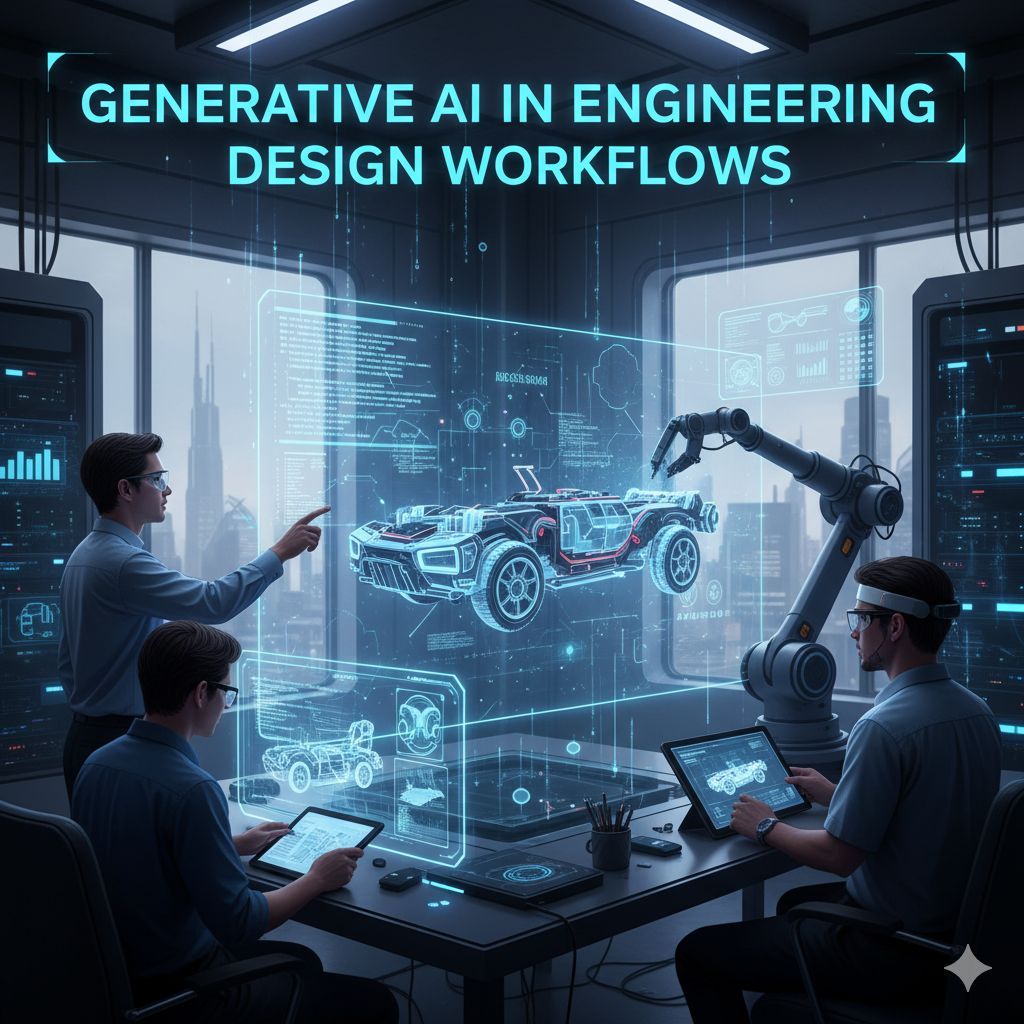The Future of Intelligent Engineering.
The field of engineering is also on a new level with the aid of Generative Artificial Intelligence (AI). AI tools are now able to produce new ideas, models, and design options automatically instead of the engineers coming up with them step by step.
The technology is useful in time saving, minimizing mistakes and enhancing creativity. Generative AI has already had a massive effect in the automotive, civil, aerospace, and mechanical engineering disciplines.
🔍 What Is Generative AI?
Generative AI is a form of artificial intelligence that can produce new things – text, pictures, and 3D items even product designs.
It is applied in the engineering domain whereby input, including materials, shapes, and performance objectives are entered and a set of design options to satisfy the requirements produced.
For example:
AI can be applied by a car designer to create lighter and stronger parts of a car.
A civil engineer is able to come up with less hazardous and consuming structures.
It takes a few minutes to test a large number of versions of a model by a product designer.
How Generative AI Assists Engineers.
- Faster Design Process
The only thing engineers need to do is to give design goals and AI produces dozens of solutions in a very short time. The work that took days to complete can be now done in hours.
- Smarter Optimization
Full-AI tools do a digital test of all designs to test the strengths, performance, and cost. It is made more easily to find the optimal solution prior to construction of anything.
- Fewer Mistakes
The early simulation of AI helps to identify possible flaws in design at an early stage, saving time and money.
- Eco-Friendly Design
AI will assist engineers in selecting the most efficient forms and materials, which will save waste and enhance sustainability.
🧩 Real-World Examples
Aerospace Industry: The companies such as Airbus utilize AI to develop lighter sections of the airplanes that are fuel saving.
Automotive Industry: AI-based design tools are applied by the brands like BMW and General Motors in order to create more robust and less costly car parts.
Civil Engineering: Engineers and architects apply AI in coming up with beautiful and strong buildings.
Electronics: AI can be used in design of smaller and efficient circuit boards.
Why Generative AI is Popular with Engineering Teams.
| Benefit | How It Helps |
|---|---|
| ⏱️ Speed | Cuts design time by up to 70%. |
| 💡 Creativity | Generates unique ideas humans might miss. |
| 💰 Lower Cost | Reduces need for multiple prototypes. |
| 🌿 Sustainability | Uses materials more efficiently. |
| 🧠 Better Decisions | Helps engineers pick the most effective design. |
The Future of Generative AI in Engineering
The generative AI is just the start. In the years to come, it will collaborate with:
- Digital Twins: Virtual machines of actual machines to experiment designs on-the-fly.
- Smart Robots: Roaming machines with AI capabilities that have the ability to design and build automatically.
- Cloud Collaboration: Workers located anywhere are able to collaborate with joint AI tools.
With the advancement of technology, the human and artificial intelligence will develop together, and more advanced, greener, and intelligent solutions will be developed.
🧭 Conclusion
Generative AI is revolutionizing the process of work of engineers. Engineers are no longer restricted to using weeks to come up with a single design; now, they can experiment with hundreds of designs within minutes.
There is no question of replacing engineers but making them think bigger and work smarter.
Making human resource combined with the power of AI is taking us to the future where all designs will be quicker, more efficient and innovative.
